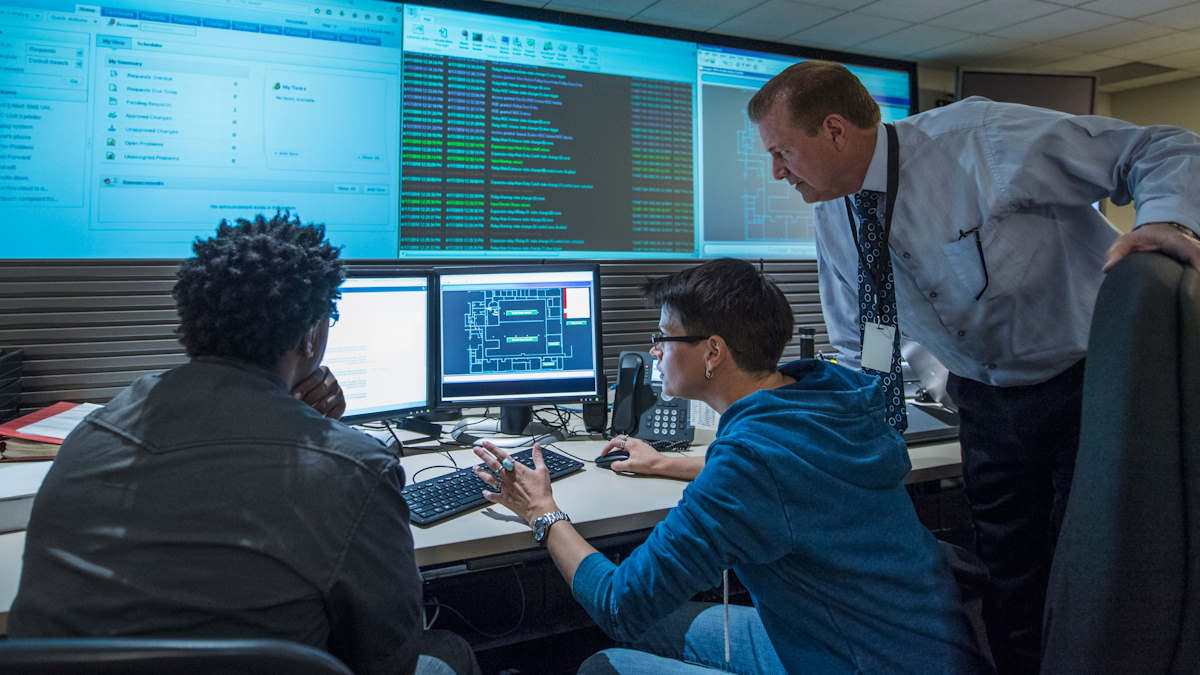Designed to store information, the network of remote servers known as "the cloud" became a strategic resource for the electronic security industry.
By Álvaro León Pérez
It is estimated that more than 90% of companies currently have platforms such as Vigilance as a Service (VSaaS), a concept that refers to video surveillance systems hosted in the cloud. The availability of increasingly powerful broadband and the development of cloud services are just a couple of the factors that have led to the development of cloud services have had an impact on the rise of this technology.
Ventas de Seguridad delved into the topic to learn about the current landscape of cloud video surveillance, as well as the trends and challenges that will determine its future in the market.
Why is this technology so popular?
Scalability, flexibility and remote access are some of the characteristics that experts highlight about cloud environments. Likewise, it has been said that VSaaS systems are an economical, multifunctional and intuitive alternative, whose cybersecurity updates are provided through the same cloud, with a higher degree of protection compared to manual updates.
"Surveillance-as-a-Service is a huge improvement, as there are no servers or other equipment on-site. Users like that it doesn't require a huge investment because cloud video surveillance is sold on a subscription basis. The company only pays for what it uses and the maintenance is the responsibility of the cloud provider", explains Jorge Rocca, Sales Manager for South America at the U.S. company Eagle Eye Networks.
In addition, this type of solution allows you to centrally manage an unlimited number of cameras and locations, which is cost-effective as you get a return on investment through the gains derived from increased operational efficiency.
Data Security: Users' Priority
Cloud video surveillance didn't always have its current acceptance. At first, manufacturers had to appease certain customer reservations, related to costs, data privacy, organizational security, and the reliability of cloud infrastructure.
 Asked about this, the CRO of the company Arcules, Steve Prodger, says that privacy, in particular, "has been a major concern for organizations that handle confidential information, since storing video surveillance data outside the facilities themselves involves the transmission and deposit of these on remote servers."
Asked about this, the CRO of the company Arcules, Steve Prodger, says that privacy, in particular, "has been a major concern for organizations that handle confidential information, since storing video surveillance data outside the facilities themselves involves the transmission and deposit of these on remote servers."
Experts such as Darren Leearmonth, CTO of Acre Security, corroborate Prodger's view: "The biggest concern we usually see is online security. Users want to be sure that their data is secure and available anytime they need it", he says.
Other objections have had to do with data sovereignty, reliance on the internet, and the ability of AI-based tools to replace human oversight.
Clearing the doubts
Currently, a cloud video surveillance system has sufficient resources to detect and solve security challenges such as Distributed Denial of Service (DDoS) attacks, malware, ransomware, phishing, and social engineering targeting its administrators.
In case of data loss due to hardware failures, human errors, or even natural disasters, these platforms generate automatic backups thanks to their recovery capabilities. They also monitor operator activity and identify insider threats and unauthorized actions by privileged users.
Gustavo Carlos, Country Manager for Peru and Bolivia at AxxonSoft, emphasizes the reliability of cloud platforms: "Providers manage the infrastructure to remediate vulnerabilities, as well as security patches, reducing risk. In addition, we offer data replication across multiple locations, providing redundancy and ensuring the availability of information, even if there are regional outages".
For his part, Carlos Mateus, Director of Business Development at ITAC, highlights that today there is a widespread use of encryption measures, accompanied by access controls and authentication to protect sensitive data stored in the cloud. Recently, ITAC won Interlat's Latam Digital award, in the Digital Security category.
 Darren Learmonth of Acre Security agrees, saying that regular audits and updates are crucial, as is taking encryption and two-factor authentication measures.
Darren Learmonth of Acre Security agrees, saying that regular audits and updates are crucial, as is taking encryption and two-factor authentication measures.
Data Governance & Compliance
There are international standards in place to ensure that the cloud security systems industry protects user data and privacy. These regulations include the U.S. federal Health Insurance Portability and Accountability Act (HIPAA) and the European General Data Protection Regulation (GDPR).
Similarly, companies such as Arcules and Eagle Eye Network choose to undergo the SOC 2 Type 2 audit, an international standard developed by the American Institute of Certified Public Accountants that is used to evaluate the security controls established by cloud providers.
"We are proud to comply with SOC 2 Type 2. Our system has been tested and audited by an independent third party to provide a high level of security", says Steve Prodger.
"At Eagle Eye Networks we have ISO 27001 and we also carry out PEN tests periodically", says Jorge Rocca about the information security standard approved and published in 2005 by the International Organization for Standardization and the International Electrotechnical Commission.
Hybrid Clouds: Benefits vs. Privacy
Hosting a video surveillance system in a hybrid cloud is an interesting alternative to meet specific security needs, as sensitive data remains on-premises, while the rest is stored in the cloud. "This approach helps balance the benefits of VSaaS with privacy needs", Prodger continues.
Regarding this option, AxxonSoft experts indicate that although the cloud has played a significant role in the advancement of video surveillance systems, the main force behind its evolution has been the creation of intermediate hybrid solutions.
 "Instead of a sudden shift to the cloud, organizations have integrated cloud-based technologies with existing on-premises infrastructure. Thus, they can adapt their solutions and meet their needs, ensuring a smooth transition to more sophisticated and future-proof surveillance environments", says Aslan Gasparyan, Director of Business Development for Mexico, Colombia and Panama at the company.
"Instead of a sudden shift to the cloud, organizations have integrated cloud-based technologies with existing on-premises infrastructure. Thus, they can adapt their solutions and meet their needs, ensuring a smooth transition to more sophisticated and future-proof surveillance environments", says Aslan Gasparyan, Director of Business Development for Mexico, Colombia and Panama at the company.
A growing sector
As noted, advances in cybersecurity and the documentation of successful cases have led to the increased acceptance of cloud video surveillance. In that sense, user responsiveness has varied by industry type, geographic location, organization size, regional cloud infrastructure, and security practices adopted.
"Offerings were improved, infrastructure was invested, and safety and operational efficiency were demonstrated. Users were finally convinced as they learned about good results in various industries", says Aslan Gasparyan.
Their version is supported by a recent study by Novaira Insights, according to which the global video surveillance market, excluding China, closed 2022 with a growth rate of 13.2%. The market intelligence company said the industry had a significant boost in regions such as North America, where the increase in cloud-connected camera installations was more than 80% last year.
The Added Value of Artificial Intelligence
AI has become a strategic complement to cloud security systems, especially video surveillance, because it enables greater breach detection and automated responses. Thus, many vendors have developed advanced algorithms that analyze behavior patterns and anomalies in real time, making it easier to identify and mitigate risks.
"The synergy between AI and cloud security systems will evolve further in the coming years, with increased use of machine learning techniques and predictive algorithms. In this way, we will have an earlier detection of threats, a proactive adaptation to new attack vectors and a faster and more accurate response to security incidents", says Carlos Mateus, executive of ITAC.
AI-powered algorithms process and analyze video data in real-time, recognizing and tracking objects at an advanced level. These functionalities have opened the door to more accurate monitoring of security cameras, reducing false alarms.
 Other benefits brought by artificial intelligence are content-based image searches, with the aim of locating specific incidents in large amounts of video, while identifying suspicious patterns of behavior that may go unnoticed in traditional systems. This includes identifying unauthorized access, loitering, unusual crowd behavior, or abandoned objects
Other benefits brought by artificial intelligence are content-based image searches, with the aim of locating specific incidents in large amounts of video, while identifying suspicious patterns of behavior that may go unnoticed in traditional systems. This includes identifying unauthorized access, loitering, unusual crowd behavior, or abandoned objects
Gustavo Carlos, an executive at AxxonSoft, elaborates on the benefits of AI-enhanced image analysis, noting that "AI algorithms continuously learn from data, which means that the system will gradually become more accurate and capable of detecting new types of threats and patterns".
What to do with dispersed teams?
Centralized management of cameras located in many different locations makes cloud video surveillance the ideal solution for businesses with hybrid or remote work. In addition, scalability means that additional locations and cameras can be added at any time, without requiring a specific brand of equipment.
 "Cloud video surveillance uses an open API so that video management systems can integrate with an unlimited number of technology partners and customize the system to the needs of the business. Homeowners enjoy easy access and remote monitoring thanks to the cloud-based architecture", says Jorge Rocca of Eagle Eye Networks.
"Cloud video surveillance uses an open API so that video management systems can integrate with an unlimited number of technology partners and customize the system to the needs of the business. Homeowners enjoy easy access and remote monitoring thanks to the cloud-based architecture", says Jorge Rocca of Eagle Eye Networks.
On this, Carlos Mateus, from ITAC, explains that "these systems are designed to work efficiently in decentralized environments and ensure the integrity and confidentiality of information, allowing employees to work remotely or hybridly with security".
In terms of system performance, he indicates that cloud processing capacity makes it possible to handle large volumes of data and ensure fast and reliable access to resources for remote work with optimal performance. It is also possible to implement multi-factor authentications and role-based access policies to ensure that only authorized users can access the information.
"Cloud security systems use encryption protocols to protect data as it is transferred between employee devices and cloud servers. In addition, the stored data is encrypted, providing an extra layer of security", adds Mateus.
Upcoming Industry Challenges
The constant emergence of new cyber threats means that security updates remain indispensable to prevent attacks and unauthorized access. As a result, vendors' ability to deliver real-time patching will be key to maintaining a secure, efficient, and compliant cloud.
Regarding the future of the synergy between artificial intelligence and VSaaS systems, the experts consulted by Ventas de Seguridad believe that developments related to improved accuracy, AI at the edge (cameras and devices) and integration with the Internet of Things (IoT) will come. In addition, they anticipate that AI will recognize complex human behaviors, gestures, and emotions, allowing for deeper and more contextual monitoring.
 Carlos Mateus sums it up bluntly: "Cloud video surveillance systems have solved the challenges of data protection, risk prevention and compliance. However, future challenges involve continuing to adapt to evolving threats, strengthening sensitive data protection, complying with global regulations, and facilitating collaboration and coordination between multiple players in the cloud environment".
Carlos Mateus sums it up bluntly: "Cloud video surveillance systems have solved the challenges of data protection, risk prevention and compliance. However, future challenges involve continuing to adapt to evolving threats, strengthening sensitive data protection, complying with global regulations, and facilitating collaboration and coordination between multiple players in the cloud environment".


























Leave your comment